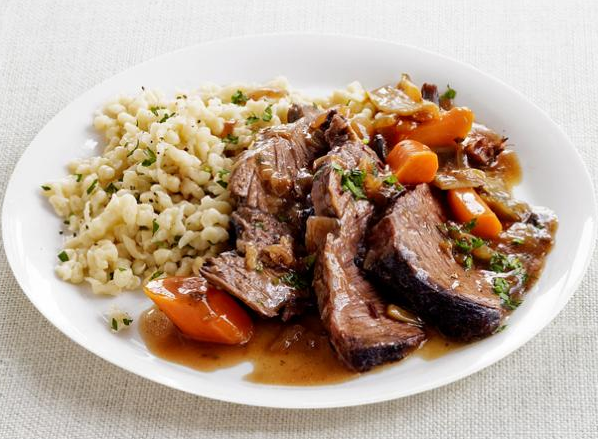India National Dish, Kichdi, is your ultimate choice if you are looking for a filing, delicious, and nutritious dish in India. This simple yet flavorful meal is a staple food across India and is known to provide a wide range of health benefits. In this article, we will explore everything you need to know about Kichdi, its history, ingredients, nutritional value, and health benefits. We will also answer some of the most common questions about Kichdi that people ask.
History of India National Dish – Kichdi
Kichdi is a dish that has been enjoyed by Indians for centuries. It is believed to have originated in the Indian subcontinent during the Mughal era. Initially, Kichdi was a simple meal made with rice, lentils, and spices. Over time, the dish has evolved, and various versions of Kichdi have emerged across India.
Today, Kichdi is known as a comfort food in India and is often served during religious festivals, special occasions, and even as a quick and easy meal. In some regions, Kichdi is also considered a healthy meal for infants and people who are recovering from illness.
Ingredients Used in India National Dish
The basic ingredients of Kichdi are rice, lentils, and spices. However, depending on the region, the recipe can vary. Some variations include using vegetables like peas, carrots, or potatoes, while others may add meat or seafood. Some of the commonly used spices in Kichdi include cumin, coriander, turmeric, and chili powder.
Nutritional Value of India National Dish
Kichdi is a highly nutritious meal that provides a wide range of vitamins, minerals, and other essential nutrients. Rice is a good source of carbohydrates, while lentils provide protein and fiber. The spices used in Kichdi also have various health benefits. Turmeric, for example, has anti-inflammatory properties, while cumin aids digestion.
Health Benefits of Kichdi
Apart from being delicious, Kichdi has several health benefits. The combination of rice and lentils provides a complete source of protein and essential amino acids. This makes Kichdi an excellent meal for vegetarians and vegans. The fiber in Kichdi also helps to improve digestion and prevent constipation. The spices used in Kichdi have anti-inflammatory and anti-bacterial properties, which can help boost the immune system.
How to Make Kichdi
Making Kichdi is a straightforward process. Here is a basic recipe for Kichdi:
Ingredients:
- 1 cup basmati rice
- 1 cup yellow moong dal (split yellow lentils)
- 1 onion, chopped
- 2 garlic cloves, minced
- 1 teaspoon cumin seeds
- 1 teaspoon coriander powder
- 1/2 teaspoon turmeric powder
- 1/4 teaspoon chili powder
- Salt, to taste
- 3 cups water
- 2 tablespoons ghee (clarified butter)
Instructions:
- Rinse the rice and dal in cold water and soak for 30 minutes.
- In a large pot, heat the ghee over medium heat.
- Add the cumin seeds and let them sizzle for a few seconds.
- Add the chopped onion and garlic and sauté until the onion turns translucent.
- Add the coriander powder, turmeric powder, and chili powder and sauté for a minute.
- Drain the water from the rice and dal mixture and add it to the pot.
- Stir well and add 3 cups of water.
- Add salt to taste and stir well.
- Bring the mixture to a boil, then reduce the heat to low, cover the pot, and let it simmer for about 20-25 minutes or until the rice and dal are cooked and tender.
- Stir occasionally and add more water if necessary.
- Once done, turn off the heat and let the Kichdi sit for a few minutes before serving.
Serving Suggestions
Kichdi is a versatile dish that can be served on its own or with a variety of sides. Here are some serving suggestions:
- Serve Kichdi with yogurt or raita (a yogurt-based condiment).
- Top Kichdi with crispy fried onions or chopped coriander leaves.
- Serve Kichdi with papad (a crispy lentil cracker).
- Pair Kichdi with pickle or chutney (a spicy condiment).
- Serve Kichdi with a side of roasted vegetables.
FAQs
- Is Kichdi healthy?
Yes, Kichdi is a highly nutritious meal that provides a complete source of protein and essential nutrients. It is also easy to digest and is considered a healthy meal for infants and people recovering from illness.
- Can Kichdi be made with brown rice?
Yes, Kichdi can be made with brown rice, which is a healthier option than white rice. Brown rice is a good source of fiber and has a lower glycemic index.
- Is Kichdi vegan?
Yes, Kichdi is a vegan dish as long as no animal-based ingredients like ghee (clarified butter) are used. Instead, vegetable oil or coconut oil can be used as a vegan substitute for ghee.
- What are some common variations of Kichdi?
There are several variations of Kichdi across India, some of which include vegetable Kichdi, seafood Kichdi, chicken Kichdi, and mutton Kichdi.
- Can Kichdi be frozen and reheated?
Yes, Kichdi can be frozen and reheated. It is best to freeze Kichdi in individual portions and reheat in the microwave or on the stovetop with a little water.
References
- “Kichdi Recipe: How to Make Kichdi at Home.” NDTV Food, 26 Jan. 2022, https://food.ndtv.com/recipe-khichdi-245592.
- “Khichdi.” Wikipedia, 7 Apr. 2023, https://en.wikipedia.org/wiki/Khichdi.
- “Kichadi Recipe.” Veg Recipes of India, 4 Jan. 2022, https://www.vegrecipesofindia.com/khichdi-recipe-moong-dal-khichdi/.

